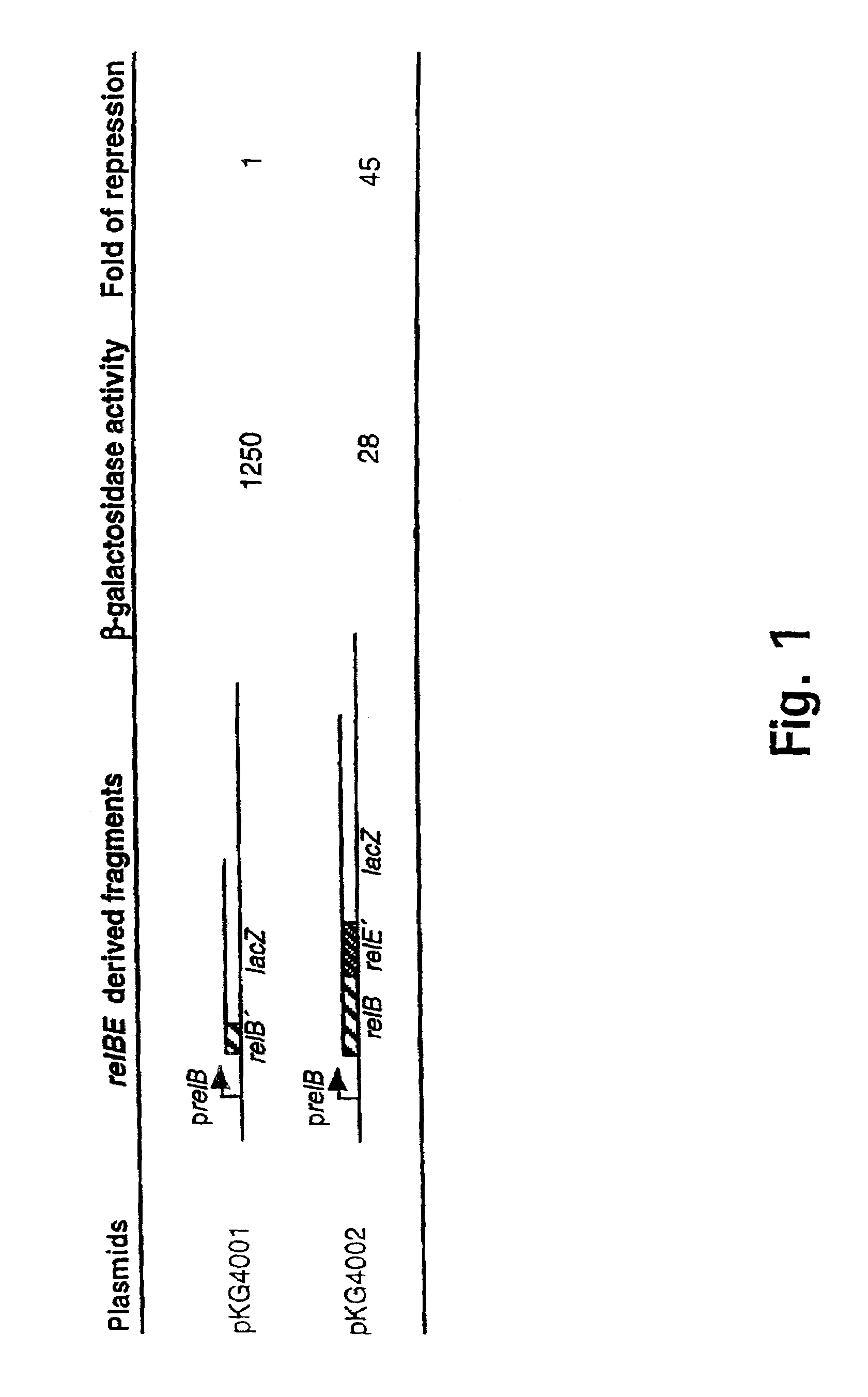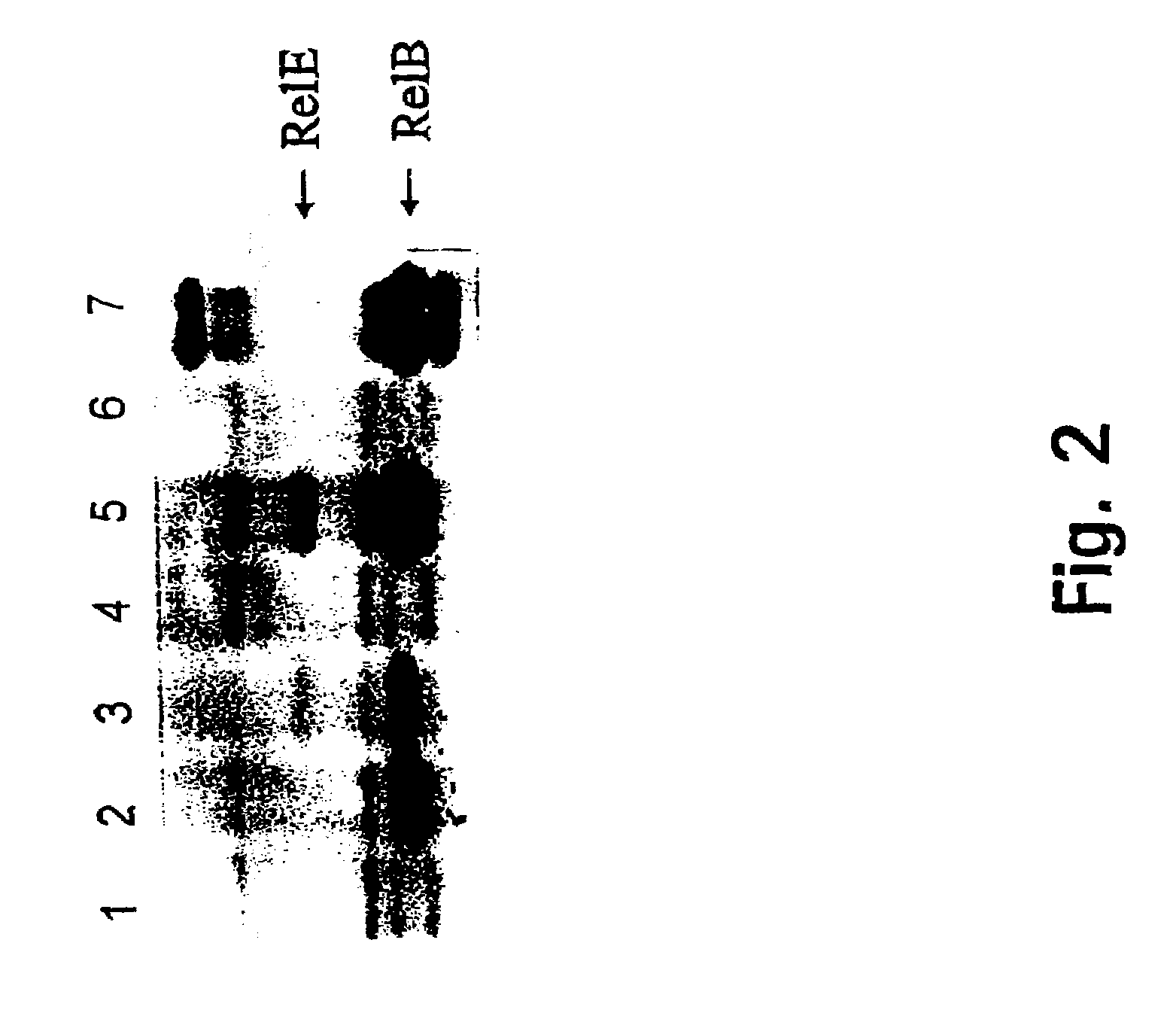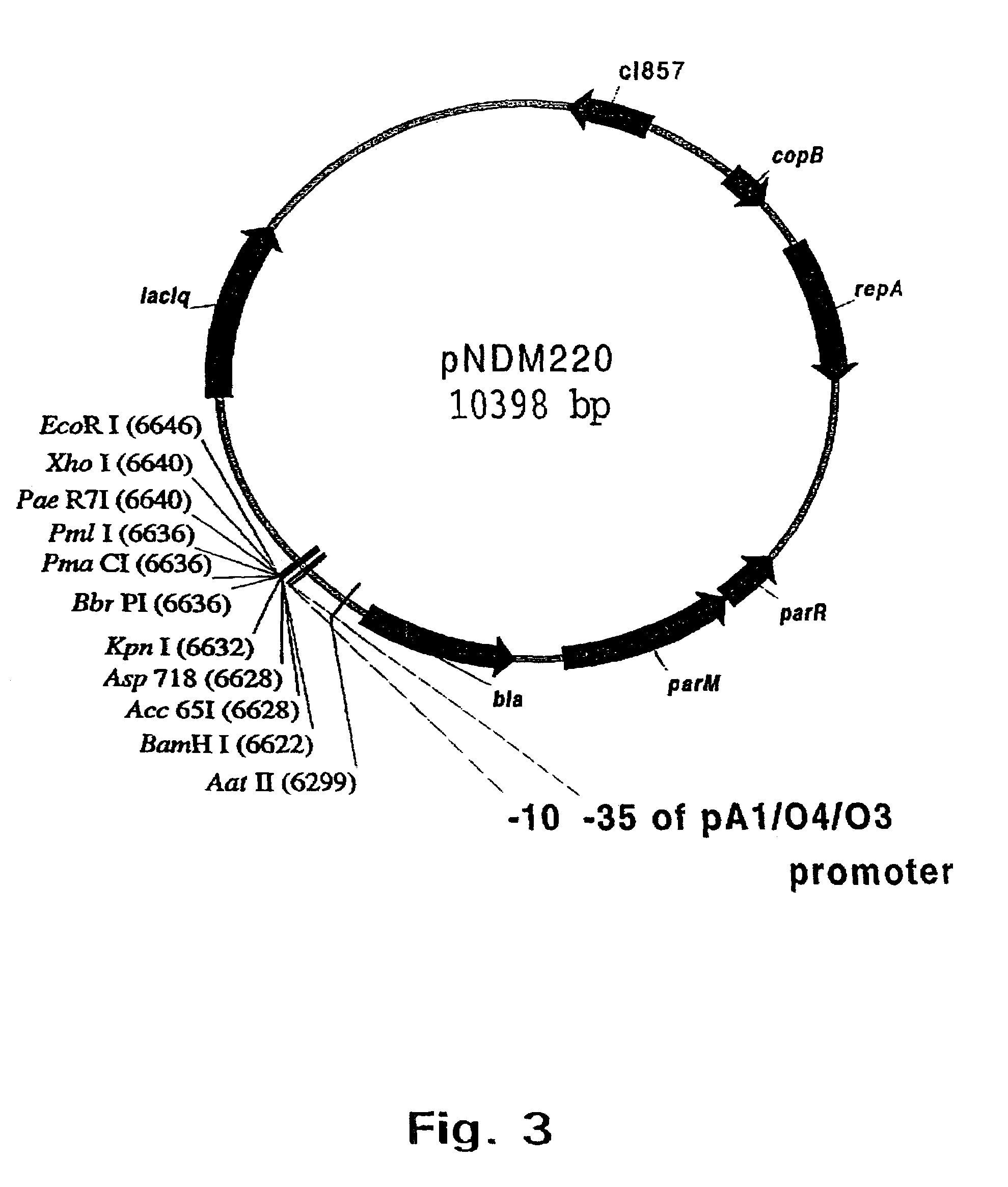Cytotoxin-based biological containment
- Summary
- Abstract
- Description
- Claims
- Application Information
AI Technical Summary
Benefits of technology
Problems solved by technology
Method used
Image
Examples
example 1
The Occurrence of relBE Operons in Bacteria and Archae
1.1. Nucleotide Sequence of the relBE Operon of E. coli K-12
[0162]The DNA sequence of the relBE operon from E. coli K-12 is shown in Table 1.1. In this Table the transcriptional start site of the relBE mRNA is indicated with two asterisks (heterogeneity). IR indicates inverted repeats in the promoter and terminator regions. Start codons and stop codons are shown in bold. The transcriptional termination point (ttp) of the relBE mRNA is also indicated with a vertical arrow. The DNA sequence is from Bech et al., 1985.
[0163]By visual inspection of the relBK-12 and relEK-12 genes there was found striking similarity with the so-called “proteic plasmid stabilization systems” as described by Jensen and Gerdes (1995). First, relEK-12 codes for a very basic protein (RelEK-12: pI=9.7) of 95 amino acids (aa), and relBK-12 codes for a very acidic protein (RelBK-12; pI=4.8) of 79 aa.
[0164]The sequences of proteins RelBK-12 and RelEK-12 are sho...
example 2
Demonstration of Translation of the relBK-12 and relEK-12 Genes
[0186]Using the low copy-number lacZ fusion vector pOU253 (Table 0.1) in frame gene fusions between relBK-12 and relEK-12 and the lacZ gene were constructed (see Materials and methods). Thus plasmid pKG4001 (+388 to +596) carries a fusion between relBK-12 and lacZ, and pKG4002 (+388 to +921) carries a fusion between relEK-12 and lacZ. The structure of the relevant parts of these reporter plasmids are shown in FIG. 1. When present in strain MC1000, both plasmids expressed significant amounts of—galactosidase fusion proteins, indicating that genes relBK-12 and relEK-12 are translated (FIG. 1). The relEK-12-lacZ fusion (pKG4002) expressed significantly lower amounts of β-galactosidase than the relBK-12-lacZ fusion, mainly because pKG4002 encodes an intact relBK-12 gene which produces the RelBK-12 autorepressor which inhibits transcription from the relB promoter.
example 3
Demonstration of Translation of the relBP307 and relEP307 Genes
[0187]To detect authentic RelBP307 and RelEP307 proteins, in vitro translation reactions were carried out using high copy number pUC-plasmids carrying genes relEP307 (pHA403), relBP307 (pHA402) or both genes (pHA100) (for construction of these plasmids, see Materials and Methods and Table 0.1). Proteins produced in the in vitro translation reactions were labelled with 35S-Methionine and separated by SDS-page. FIG. 2 shows the direct visualization of RelBP307 and RelEP307, thus providing evidence that the corresponding genes are translated.
PUM
| Property | Measurement | Unit |
|---|---|---|
| Volume | aaaaa | aaaaa |
| Volume | aaaaa | aaaaa |
| Volume | aaaaa | aaaaa |
Abstract
Description
Claims
Application Information
 Login to View More
Login to View More - R&D
- Intellectual Property
- Life Sciences
- Materials
- Tech Scout
- Unparalleled Data Quality
- Higher Quality Content
- 60% Fewer Hallucinations
Browse by: Latest US Patents, China's latest patents, Technical Efficacy Thesaurus, Application Domain, Technology Topic, Popular Technical Reports.
© 2025 PatSnap. All rights reserved.Legal|Privacy policy|Modern Slavery Act Transparency Statement|Sitemap|About US| Contact US: help@patsnap.com



